Télesphore Hogue went on to talk of earlier memories: born in 1844 on Sainte-Catherine Street between Sanguinet and Saint-Denis, he remembered that the countryside began above Sherbrooke and added that a windmill was located near the Monastère du Bon-Pasteur. Prévost then questioned him about the famous “Pieds-Noirs”:
— Did the Pieds-Noirs of Carrière Street get into fights at your hotel?
— The Pieds-Noirs didn’t fight in my hotel much, because I wouldn’t let them. I wasn’t always old, you know, and when they started to make noise, I threw them out. One bully, named Brazeau, boasted of his strength and he liked to argue. But when he came to my place, he didn’t do anything stupid.
But not all the Pieds-Noirs were as wise: Hogue went on to tell an anecdote in which he locked up one of his drunken clients for refusing to pay for his drinks. Shortly after, he single-handedly fought three other clients who had come to avenge their friend:
I knew how to handle one man, two maybe, but three, was really too much. I had a lot of trouble getting rid of them. I would have won more quickly if the carters watching us from the station platform had come to help me. For two or three hours after that there scuffle, I thought I would die, I was in so much pain.
The interview ended with talk of the hotel-keeper’s two other passions: billiards – he said he won an amateur championship in 1892 – and horse racing at Decker’s Park, located on Saint-Denis Street north of Laurier. Hogue owned several horses and his favourite, which won him a cup, was named Mile End Boy.
Mile End station closed in November 1931, when the train service was moved to the new Park Avenue station on Jean-Talon. A new activity arrived next to the hotel in 1935 with the opening of the ‘Mile End Arena’, a small open-air arena with wooden bleachers. Boxing matches were presented with tickets sold at the hotel. But the arena was short-lived, closing in 1943. Afterwards, the hotel turned into a tavern (Lovell’s lists it as “C.P.R. Tavern” by 1944), and the upper floor was transformed into a rooming house.
In May 1985, La Presse journalist Gérald Leblanc found Télesphore Hogue’s grandson, Martial Hogue. At the time he was 77 and described himself as a poet-painter and a “professional outsider” who was born and grew up in the neighbourhood. The short interview revealed very little new about the hotel’s history, although the journalist called Martial Hogue “inexhaustible” about the subject, as well as about the tailor shop belonging to his father.1 But the article did provide a unique photograph of the building in its heydays. The old hotel which had been the pride of the Hogue Family was about to disappear. A fire completely destroyed it seven months later, in the early morning hours of January 5, 1986, in the middle of a snowstorm. Today, more than a quarter century has gone by, and the land on which the C.P.R. Hotel once stood is still vacant.

La Presse, Monday 6 January 1986, p. 3. The caption is incorrect: the old hotel was not the station building (already demolished in 1970).



la ou est un petit bar et un million de tapis et tuiles